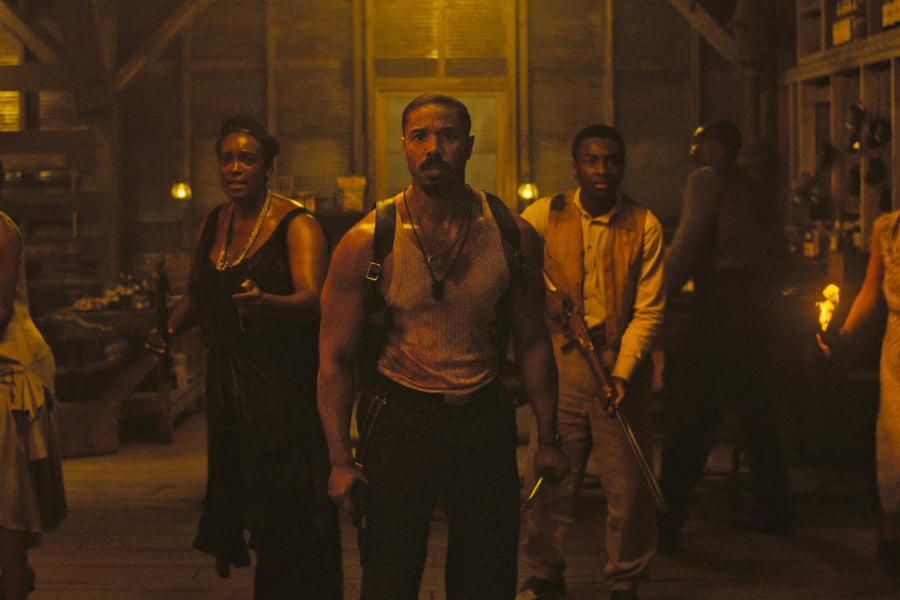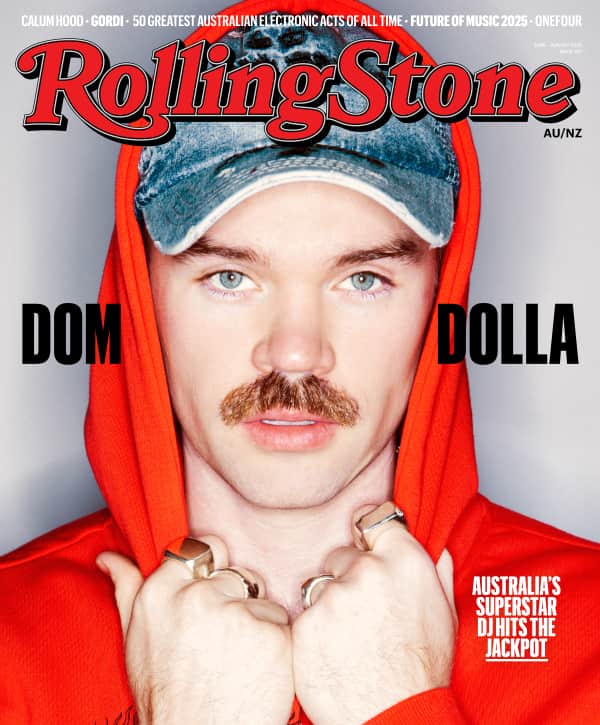For a movie about an apocalyptic clash of vampires and gangsters, Sinners has moments of unexpected jubilance, even rapture. Take, for instance, the scene where a young, idealistic musician performs for the crowd at a newly opened juke joint in the Mississippi Delta of 1932. How good is Sammie (Miles Caton), a preacher’s son and aspiring bluesman? When he plays and sings, all of history seems to metaphysically come together, conjuring visions of music’s past and future. Suddenly, a rock & roll axeman is crashing this 1930s party, shredding like Hendrix. Someone scratches a turntable. Tribal dancers stomp and sway alongside breakdancers, all in one continuous shot that becomes an anachronistic continuum of Black musical expression across the ages. It’s sublimely excessive. And then the camera tilts up from the throng of sweaty revelers to reveal a canopy of brightly glowing embers. Yes, the roof is on fire.
Lots of sparks fly from Sinners, a cluttered but often rollicking original vision from Ryan Coogler, the writer-director who revitalized the Rocky series with Creed and reinvigorated the Marvel model with Black Panther (and, to a lesser extent, its baggier sequel). Relieved at last from franchise duty, Coogler has applied his considerable chops to a supersized supernatural thriller that betrays the depth of his interest in Black legacy, the blues, and a more lawless American yesterday. Watching the movie, you get the impression of a gifted artist convinced he may never get another chance to spend this kind of money again. As a result, Sinners often plays like several very different films crammed onto one IMAX screen, for better and worse. It’s not just genres of music that mingle over the course of its leisurely 137 minutes.
On the surface, for example, Sinners is a monster movie, pitting the nightlife of a Depression-era town against creatures of the night. But this is also Coogler’s riff on the Western, with circling buzzards and black hats; his stylish crime-flick pastiche, with sleek suits and loaded guns; and a Southern Gothic melodrama about the sins of the father and the return of prodigal sons. Most eccentrically, and rewardingly, the movie is a kind of musical: Even the vampires are handed a couple of numbers, twisting sweet Irish ballads into unholy cult prayers. When characters aren’t banging out their own songs, composer Ludwig Göransson is enveloping them in his country-fried symphony of guitar, banjo, and harmonica.
Rather than build the movie around bright-eyed Sammie (a dreamer inadvertently drawing the darkness closer with his song), Coogler doubles down on Michael B. Jordan — the tragically murdered Oscar Grant of his Fruitvale Station, the hungry Adonis of his Creed, the complexly villainous Killmonger of his Black Panther. Here, via a dual performance, Jordan plays Smoke and Stack, twin brothers back in their hometown after consecutive stints in the trenches of WWI and Capone’s Chicago. The two have stolen enough from warring mob families to buy an old sawmill from the Klan, with plans to transform it into a bustling watering hole for the community. “Only money can give you power,” reasons Smoke; he’s the more serious of the brothers, identifiable by a glower or, conversely, a lack of the wolfish grin Jordan adopts whenever he’s playing the slicker, cockier Stack.
Nearly an hour elapses before evil descends upon the saloon. Along the way, Coogler deliberately lays out the geography of his small-town setting (sometimes one step at a time, via a couple long, unbroken shots) and builds his ensemble cast as the brothers assemble the staff and entertainment for opening night. Veterans of Spike Lee’s battlefield, Delroy Lindo and Omar Benson Miller bring a glancing but palpable sense of history to the relationships of this prohibition-era South. And after his time in the skittishly sexless Marvel Cinematic Universe, Coogler seems liberated by the opportunity to follow characters with actual libidos. There’s nothing chaste about Smoke’s rekindled romance with the usefully witchy Annie (Wunmi Mosaku), nor Stack’s pricklier reunion with feisty flapper Mary (Hailee Steinfeld), who’s eager to see him head down south again in a whole other sense.
Something wicked their way comes, belatedly, in the form of Remmick, a nomadic bloodsucker drawn by Sammie’s music. Jack O’Connell creepily plays the fiend like a cult leader, not looking to feast so much as assimilate. If the delayed pivot into horror recalls another bar-set vampfest, From Dusk Till Dawn, the real source of inspiration here is the widescreen claustrophobia of John Carpenter, with a collection of desperate good guys holed up inside a sanctuary they’re forced to defend from circling bad guys. Coogler even mimics the famous blood test from The Thing, this time with cloves of garlic to determine who among them is not themselves. Of course, that’s just another continuum, like the one that links gospel to rock and soul: The line connecting Coogler to Carpenter runs further back, through Howard Hawks classics about camaraderie among men under duress.
Love Music?
Get your daily dose of everything happening in Australian/New Zealand music and globally.
Truthfully, Sinners might be more interesting before the vampires show up. Coogler has fun with the logistics of letting the wrong one in, as former friends and neighbors try to finagle an invitation they didn’t need before. But there’s little new or novel about his play on the lore. All that gnashing and suckling is old hat — as old as the burgundy fedora Jordan slips on when playing the more jovial of these brothers in arms. And what, exactly, do the monsters represent? The allure of transgression? The stubbornly undying evil of the KKK? (The first of the head vamp’s unwilling recruits is a pair of clueless hood-wearers.) It’s most tempting to see them as the phantom of a lie Smoke and Stack tell themselves — their belief that they can truly buy into power and buy out of the racist world they’ve always known. But Coogler doesn’t really commit to any one coherent metaphor. Maybe that’s more blessing than curse in our age of baldly allegorical horror movies.
Still, one might wish the filmmaker did commit to better sketching in the personal drama at the center of Sinners. His characters and relationships don’t evolve much beyond the archetypal. That goes for Jordan’s twin protagonists, whose conflict comes down to a sliver of exposition regarding their shared, traumatic childhood. Why cast an actor as charismatic as this star and then hand him two underwritten parts? Sammie, a troubadour of nearly messianic stature, is no more richly developed. He sings and yearns and then plays his larger role in a story that stretches forward in time, hitting multiple endings along the way, including a couple smuggled into the credits.
But if Sinners is messy, it’s sometimes pretty glorious, too. Coogler is swinging wide and far beyond the boundaries of franchise fare. Having spent most of his career finding loopholes in the devil’s pact of Hollywood hit-making (which is to say, finding ways to assert himself during Marvel maintenance), he’s now dabbled in something personal: a genre-blending blast of blood, sex, and homespun Delta blues. When the flaws fade from memory, you’ll probably remember what’s grand about Sinners: the musicality of its editing; the melody of a Tommy gun righteously firing on monsters much worse than vampires; and the moment when Coogler triumphantly expands his aspect ratio, like curtains lifting to reveal a brightly lit stage.
From Rolling Stone US



































